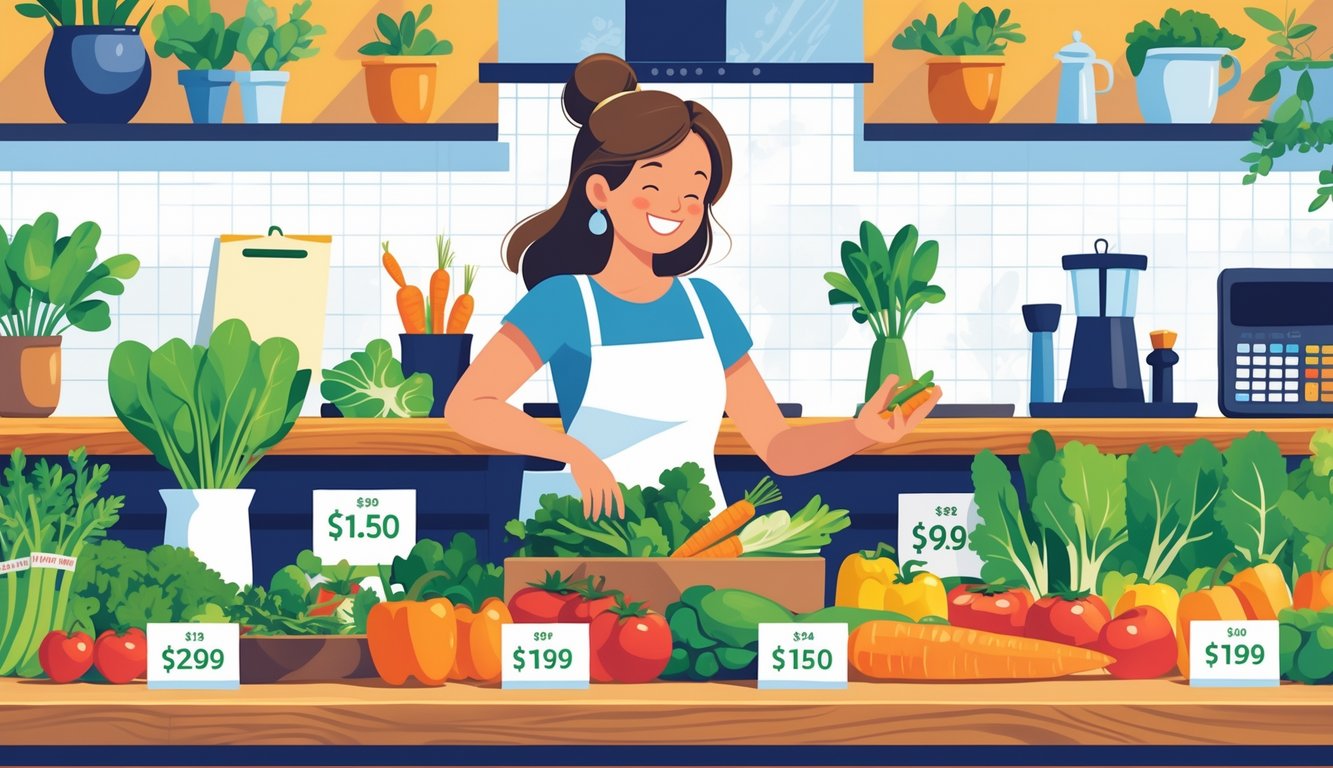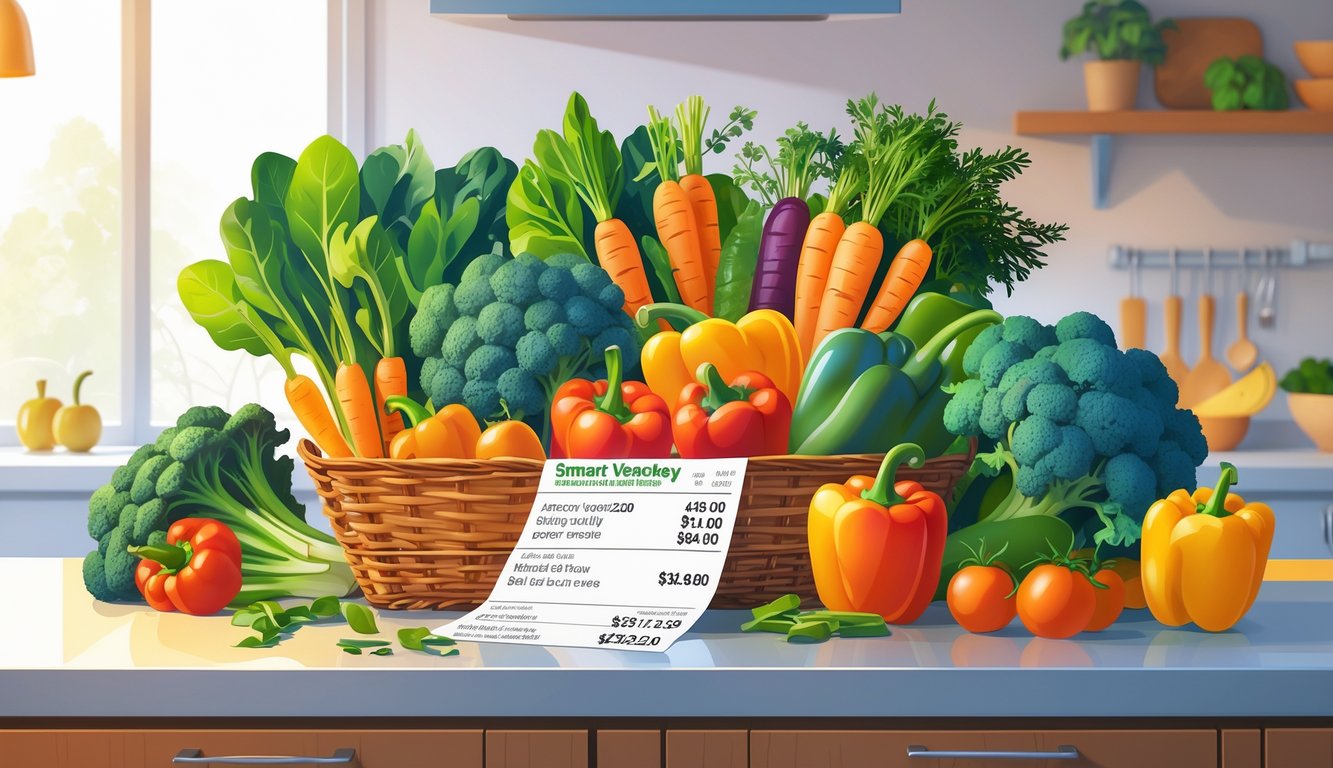
Essential Pantry Staples That Pair Well with Vegetables
Who keeps track of what belongs in a “well-stocked pantry”? Not me. One kid wants cheese balls, the other wants kale chips—neither helps me make dinner. But apparently, having certain dry goods on hand cuts grocery bills. I’ve bombed more risotto attempts than I’d ever admit, but when I actually have the right pantry stuff, I dodge takeout more often.
Cost-Effective Staples for Vegetable-Based Meals
Dry pasta. I’m not proud, but it’s always there. Quinoa, wild rice, brown rice—honestly, they taste better with lemon, don’t ask me why. Forget lentils for a week and suddenly, there’s no soup, no curry, nothing. Feels like that 21 Pantry Staples Every Vegetarian Should Have On Hand list is mocking me.
Eggs—unless they cost a fortune again—fix every sad leftover situation. Fried rice, frittata, whatever. Flour? I buy it thinking I’ll make flatbread, but mostly it thickens chili (and clumps, but who cares). Dried beans, chickpeas, canned tomatoes—they’re the real MVPs. Bulk buying’s great until you mix up noodles with barley and wonder why dinner’s weird.
Budget-Friendly Meal Planning Ideas
Anyone who claims meal planning is “easy” is lying. I’ve burned through optimism and calendars both. Now I just batch-cook pasta, rice, or lentils on Sunday, then dump whatever vegetable’s about to go bad on top, plus random herbs. That pantry staples list keeps shaming me about those bay leaves I never use.
I scribble meal plans on a whiteboard—my handwriting’s a mess. Stir-fried broccoli with leftover pasta, smoky chickpeas and carrots, maybe a stew if sweet potatoes are cheap. Leftovers are non-negotiable; I refuse to buy overpriced sandwiches. Eggs show up everywhere—shakshuka one night, scrambled on toast the next. My budget only survives if I cook at home and actually eat what I buy.
Meal Planning and Cooking at Home for Greater Savings
My fridge is groaning—three heads of cabbage, everything wilting, and I’m pretending I know what “inventory shrink” means. Am I planning meals, or just panicking and googling “what to do with turnips” again? Leftovers multiply. If I stop winging it, somehow my receipts get less terrifying.
Creating a Weekly Vegetable-Focused Meal Plan
Staring at discount broccoli, my brain short-circuits. A friend tried planning every meal, ended up with limp kale and zero motivation. Now I just jot down two or three veggie ideas, call it a plan, and hope for the best.
Supposedly, NYT Cooking says “beans are a home cook’s secret weapon.” Sure, but after the third batch of chickpea stew, I’m over it. I freeze single servings anyway. Grocery spending drops—maybe 15%? U.S. News claims it does, but who’s actually tracking every cent?
Too much planning? I freeze up. Now I just make a quick list for 3-4 dinners, pick veggies that overlap, and skip anything pre-chopped because that stuff costs more than steak.
How Cooking at Home Cuts Costs
Cooking at home used to be a chore, now it’s a habit—leftovers everywhere, savings stacking up. Eating out three times a week used to wreck my budget. Now it’s one pot of roasted vegetables and chicken, then leftovers for lunch.
USDA says eating out costs triple what home cooking does. Makes sense—my friend just spent $70 on burgers and fries for her family. Cooking at home (and using leftovers) cuts that in half for a week’s food. Cheapest staple? Cabbage, beans, potatoes—pick one and run with it.
Bagged greens and “steamable” veggies make me cringe. Prepping everything myself saves money. If I accidentally make a mountain of roasted zucchini, I freeze it—sometimes I even remember to use it. All these little things keep my grocery bill from spiraling.
Nutrition Benefits: Get More for Less

I toss a bag of frozen broccoli in my cart and wonder why it’s still so cheap when everything else costs a fortune. Some dietitian at a work thing I barely attended once said fiber and vitamins don’t care about price tags—most veggies quietly outperform all those overpriced “superfoods.”
High Nutrient, Low Cost Vegetable Choices
I stand there, staring at canned beans and fresh bell peppers, and remember the CDC says ninety percent of adults don’t eat enough vegetables. How? Vegetables have all the vitamins, minerals, and fiber you need, and they’re everywhere. Soup weather hits, so frozen peas, carrots, cabbage, and sweet potatoes pile up in my cart.
I used to think frozen veggies were a downgrade, but they’re picked and frozen at peak ripeness—nutrients hang on just fine. Kale, spinach, carrots, green beans, broccoli—they’re always on dietitian “top picks” lists. Lentils? Cheaper than potatoes, more fiber, and you never run out.
Bulk carrots—ten pounds for the price of a tiny bag of “baby” carrots—suddenly I’m eating carrot sticks all week. Want a real budget nutrition chart? Just look up price-per-nutrient and you’ll see cabbage, onions, frozen mixed veggies at the top.
Selecting for Vitamins and Fiber Without Breaking the Bank
Every time I stare at a nutrition label, I remember fiber—dietitians say 25–38 grams a day, but who’s hitting that? Collard greens, broccoli, frozen spinach—2–5 grams per half cup. Vitamin C? Bell peppers and Brussels sprouts beat oranges most days. Vitamin K? Kale, cheap in big bags, always wins.
Fresh cauliflower or canned green beans—honestly, after rinsing, the nutrition difference is tiny. Harvard Health says “color diversity increases nutrient variety,” but my plate’s usually just green and beige. Still, canned tomatoes and snap peas are cheap, full of antioxidants and B vitamins, and don’t taste like cardboard.
People whine about veggie “taste fatigue,” but maybe that’s just bad cooking. Add frozen corn to chili, toss sautéed zucchini into pasta, stop overthinking it. If I want the most nutrients per dollar, I check unit price and skip the fancy prewashed stuff. Turns out, frozen veggie blends—carrots, peas, green beans—are the best deal, help cut chronic disease risk, and aren’t even Instagram-worthy. That’s probably a good thing.